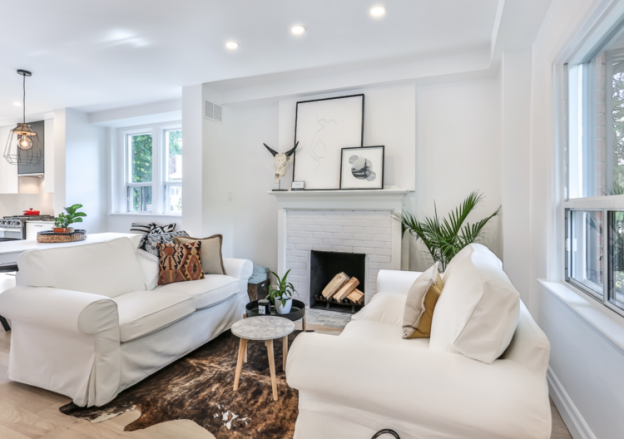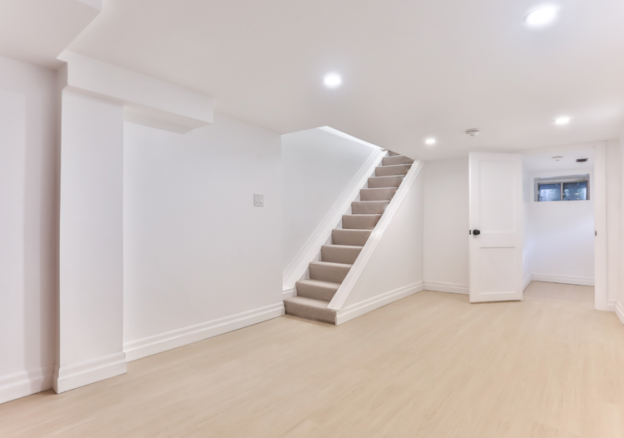One of the trickiest part of a house is the Basement. Usually these are large spaces which begs for a new use, but usually become a storage place. And if you don’t want to sell your house but want extra living space, you might consider to convert your basement to the room of your dreams.
Visualizing a finished basement, you might think of a room that isn’t finished to the standards of the rooms upstairs.The basement is the most challenging part of the house for creating an inviting and beautiful space in your Port Credit Home.
A finished basement definitely adds value to your home, but of course, you still need to check with your insurance agent. Some finished basements may not be insured, and also do not expect a bedroom there to count in the total of bedrooms when you sell the house.
PLUMBING. Some may want to add a bathroom in the basement, and if so, find your soil stack and see whether the main drain for the house goes underground or runs above ground, as long as you put the new bathroom near it, plumbing shouldn’t be much more difficult than upstairs.
You will most likely need a grinder and a pump if it runs above ground. Water runs down via gravity, so if you want it to go back up after you flush, it takes special equipment.
NATURAL LIGHT. One of the most short supply in a basement is the natural light. Many building codes require a second way to exit the basement if the space is going to be finished. Install an egress window and window well to satisfy code requirements and to get more light. An egress window is big enough for a person to exit through it, and the well allows more light into your basement. Also, have a drain installed at the bottom of the well to avoid water problems.
THE CEILING. You would never know this room is in a basement. Pipes, ducts and wires to conceal. This only means dropping the ceiling height in certain areas.
Try to consolidate the obstructions to one area and then create a space with a lower ceiling. Continue the dropped ceiling to the walls for a natural transition. Boxing in pipes and ducts with soffits and chases tells people that there’s something hidden.
The use of drywall will make the basement look like it belongs upstairs. You’ll need a place access panels where shutoffs, junction boxes or meters are. Make sure to install the drywall ½ inch off the ground and use moisture-resistant drywall. All basements flood eventually, and this will help.
Fiberglass-faced drywall is even better than paper-faced drywall, because it’s the paper that harbors mold.Be prepared to pay extra for finishing the fiberglass drywall, because the whole face should be skim coated with joint compound. Finished basements traditionally had ceiling tiles in a grid rather than a drywall ceiling because most people don’t like this look. If you want easy access to the space above the basement ceiling but want a more interesting look, consider sculptural ceiling tiles.
Because basements is below the kitchen, bathrooms and any other sources of water in the house, so when a basement floods it usually comes through the ceiling. If you have a drywall ceiling, you’ll need to cut out a section and repair it. If you have ceiling tiles it may be as simple as replacing a tile or two.
HEIGHT. If you already have any plans on your finished basement, like exercise down there, you may need more headroom. And of course a little more height for you to stretch it all the way.
WATERPROOFING. Yes, I keep mentioning flood. But it really does happen, so plan ahead. If you don’t have a system in place to deal with the water, choose a flooring material that can handle getting wet.
LIGHTING. Good lighting is the most critical component to making a basement a place people want to hang. If you plan to use recessed lighting in your low ceilings, think of the cone of light that spreads from a recessed light. The closer it is to the floor, the closer you’ll need to space the lights to get good coverage. Good lighting design makes a big difference, so hire a professional lighting designer.


